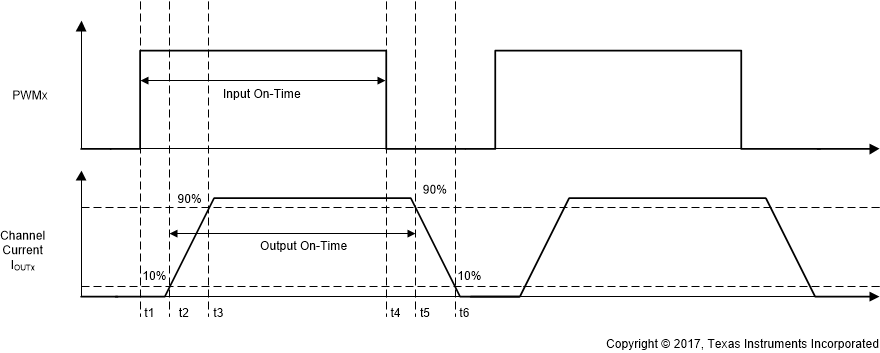JAJSE12A October 2017 – October 2017 TPS92830-Q1
PRODUCTION DATA.
- 1 特長
- 2 アプリケーション
- 3 概要
- 4 改訂履歴
- 5 概要(続き)
- 6 Pin Configuration and Functions
- 7 Specifications
- 8 Detailed Description
- 9 Application and Implementation
- 10Layout
- 11デバイスおよびドキュメントのサポート
- 12メカニカル、パッケージ、および注文情報
7.1 Absolute Maximum Ratings
over operating junction temperature range TJ= –40°C to 150°C (unless otherwise noted)(1)| MIN | MAX | UNIT | ||
|---|---|---|---|---|
| Supply voltage | IN(2) | –0.3 | 45(3) | V |
| Input voltage | DERATE, DIAGEN, FD, ICTRL, ISN1, ISN2, ISN3, ISP, PWM1, PWM2, PWM3, PWMOUT, SENSE1, SENSE2, SENSE3(2) | –0.3 | V(IN) + 0.3 | V |
| Output voltage | CP1P, CP2P, CPOUT, G1, G2, G3(2) | –0.3 | V(IN) + 10 | V |
| Current-sense voltage | V(ISP) – V(ISNx) | –0.3 | 1 | V |
| Gate-source voltage | V(Gx) – V(SENSEx) | –1 | 12 | V |
| I/O | FAULT(2) | –0.3 | 22 | V |
| CP1N, CP2N, IREF, PWMCHG(2) | –0.3 | 6 | V | |
| Storage temperature, Tstg | –65 | 150 | °C | |
| Junction temperature, TJ | -40 | 150 | °C | |
(1) Stresses beyond those listed under Absolute Maximum Ratings may cause permanent damage to the device. These are stress ratings only, which do not imply functional operation of the device at these or any other conditions beyond those indicated under Recommended Operating Conditions. Exposure to absolute-maximum-rated conditions for extended periods may affect device reliability.
(2) All voltages are with respect to GND.
(3) Absolute maximum voltage 45 V for 200 ms.
 Figure 1. Channel-Current Output Timing Diagram
Figure 1. Channel-Current Output Timing Diagram